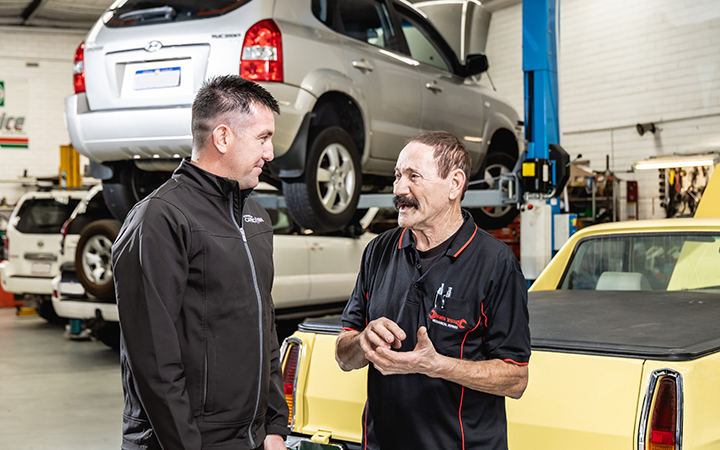You can dive into your accounting software and work it out easily. But what about when it comes to leveraging that customer loyalty to maximise the return to your business? Then it gets a bit trickier. We’re no longer in the blackand-white world of accounting, we’re in the murky and mysterious world of marketing—including the seemingly untrackable world of “word of mouth” recommendations.
In this article, we’re going to look at how to turn those loyal (or at least repeat) customers into referrals and recommendations that bring in more business, using your existing loyal customer “assets” to boost your bottom line. Let’s start with a few basics.
What is customer satisfaction?
Before you can leverage your loyal customers, you need to have some. Retaining customers—that is, having a customer come back multiple times, hopefully with multiple vehicles, in the long-term—is every bit as important as acquiring new customers. You will never retain an unhappy customer. So, how do you know how well you’re doing?
How to measure your customer satisfaction
You measure it. Start by looking at your retention metrics, diving into your data to see how many times customers came back and when they stopped coming, and looking for any patterns to indicate when customers left (e.g., new pricing, new management, or a change in customer service approach).
For small businesses, Chris Smoje, a Perth-based customer service expert and author of All-In Culture suggests keeping a written record of feedback, whether it’s verbal, written or through an online review, and keeping score.
You can also ask your customers. There are plenty of customer satisfaction surveys around, including Net Promoter Score, which measures a customer's willingness to advocate for your brand. It’s a useful indicator of trust and perceived value.
Chris’s customer feedback pro tips:
- Don’t assume a customer is happy just because they haven’t complained. Ask for their feedback.
-
The quality of the feedback matters more than the data point. Four stars out of five doesn’t tell you where you went wrong, which doesn’t help you improve.
-
Ask specific, open and non-leading questions. (e.g., “What did you think of the way you were greeted today?” or “What did you like about the way our service person shared their knowledge with you?”) Invite open comment replies rather than numerical rankings.
- Remember, customers are comparing the service you gave them not just with other workshops, but with every other business they deal with.
Use your feedback to improve your customer service
There’s no point gathering all this data unless you’re going to use it to improve your customer experience. Your customers are telling you what they want, so give it to them. Use it as an opportunity to praise staff who performed well, to identify the need for more training or to introduce new customer service practices.
If customers take time to share their opinions with you, thank them. Don’t leave Google or Facebook reviews languishing without comment. Engage with the customer. Potential customers may well judge you based on your responses, rather than on the reviews themselves. When you make changes, track your customer feedback and reviews for signs of improvement.
Leveraging happy customers to find more customers
So, back to the question at hand: How do you turn satisfied, repeat customers into advocates who refer new customers to your business?
“Just because customers keep coming back doesn’t mean they’re going to refer their friends,” Chris said. “A satisfied customer and a repeat customer may not necessarily be a loyal customer. They might just be coming to you because it’s convenient.”
Chris said there is a difference between a customer giving a recommendation when someone has asked “Do you know a good mechanic?” and saying unsolicited to someone, “You won’t believe the experience I had getting my car serviced.”
“Getting those out-of-the-blue referrals is about creating those magical or amazing moments for your customers,” Chris said. It’s the little things that can make a difference, like remembering a customer’s name and some details of their life, accommodating their needs (e.g., pick-up times and contact preferences) and taking your service beyond “expectations satisfied” to “expectations exceeded”.
“There’s got to be some sort of emotional attachment for a customer to be truly loyal,” Chris said. “You need to create those relationships, and not take customers for granted, because then it’s going to be harder for them to go elsewhere.”
Giving referrals a nudge with marketing strategy
Of course, strategies like “refer-a-friend” campaigns are useful tools for encouraging customers to recommend your business.
“Refer-a-friend campaigns are great because they typically attract like-minded people, so you’re getting the right kind of customer coming back in through the front door,” Chris said.
“My advice is that you still have to make it worthwhile to both parties. So, for example, if a customer refers a friend perhaps they both get 10 per cent off their next service, or something like that.”


